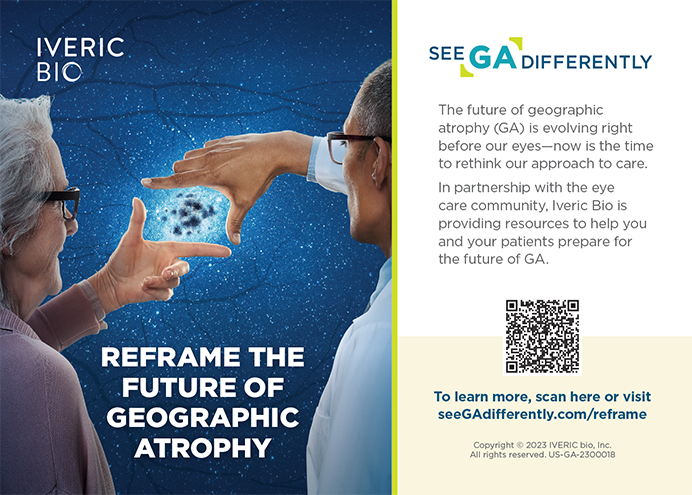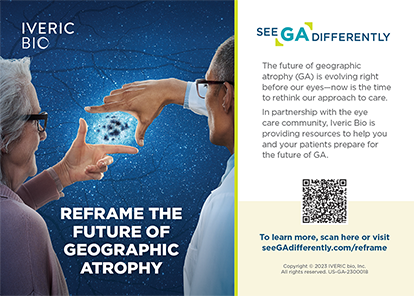Moderators
Panelists
Radhika Rampat, MBBS, BSc(Hons), FRCOphth: It’s a pleasure to chat with such an esteemed panel of young anterior segment surgeons. Our discussion focuses on optimizing patient care, addressing gender bias, advancing translational research in anterior segment disease, innovation in refractive surgery, digital health care, and refractive surgery training. Tanya, you have been a role model for women in refractive surgery by speaking up and calling out gender bias. What practical tips can you share to minimize unconscious gender bias in the workplace?
Tanya Trinh, MBBS, FRANZCO, FWCRS: This symposium has a high concentration of leaders in anterior segment surgery as well as industry partners, and thus it’s a valuable opportunity to speak openly about these issues, which affect about 45% of current trainees and 30% of practicing ophthalmologists worldwide.1,2 The first step is identifying the extent of the problem within your institution. Unconscious bias, by definition, requires a conscious effort to look for and address it. This can be done by conducting confidential, constructive small group interviews, encouraging women to come forward, and creating a safe space in which they can speak about their experiences. Having both men and women lead crucial conversations is vital to creating an environment where unconscious bias can be addressed proactively and sensitively. A landmark study from Johns Hopkins University3 demonstrated that once problems with the retention and promotion of women were identified, specific interventions made demonstrable and substantive improvements in the development of women’s careers, with a fivefold increase in female associate professor rank within a 5-year period. These changes were also noted to benefit male faculty with increased reported satisfaction.
This study shows that, once the problem is identified, it is important to devise and implement holistic and evidence-based strategies to improve women’s career development at a systematic level. These strategies must be mindful of groups that suffer from greater discrimination routinely, such as women of color, nonbinary individuals, and other minorities. They also need to be transparent so that no group is marginalized. Substantive and growing evidence shows that setting quotas to address inequity is effective. This approach is based upon research that meritocratic organizations are often unconscious to their own inherent biases that can discriminate against gender and minorities.4 Another strategy is to improve the visibility of their women leaders and redesign the selection process for residency training programs so that it is gender blind and based on merit.
It is incumbent upon the leaders and heads of organizations, both men and women, to elicit change and create an environment that allows women and other minorities to come forward with their concerns. Many individuals in positions of power happen to still be men. They have a platform and therefore responsibility to elicit change. Allyship, leadership, mentorship, and sponsorship are crucial concepts (see the accompanying sidebar).
Distinguishing Between Allyship, Leadership, Mentorship, and Sponsorship
By Laura Straub, Editor-in-Chief
Allyship, leadership, mentorship, and sponsorship are related concepts that focus on individuals with privilege and their distinct functions in supporting and promoting gender equality.
Allyship. Individuals who empathize with the struggles faced by marginalized groups are considered to be allies. They use their privilege and influence to address challenges and champion change. Allies provide active support and advocation for the rights, equality, and well-being of all individuals, regardless of their gender identity, in the following ways1,2:
▶ Recognize the significance of achieving gender equality;
▶ Apply strategies to dismantle harmful gender stereotypes and discriminatory practices;
▶ Actively listen to and respect the experiences and perspectives of individuals from all gender identities; and
▶ Amplify voices of those less heard.
Leadership. Individuals who hold positions of authority play a crucial role in devising, promoting, and implementing inclusive policies and practices. Leaders do the following3,4:
▶ Establish the tone for organizational culture and values;
▶ Prioritize diversity and gender equality to encourage participation, career growth, and fair treatment of all; and
▶ Support and value the contributions of all members of their teams.
Mentorship. Individuals who share their expertise with mentees and recognize the unique obstacles they may face due to bias can be great mentors. They can help mentees navigate challenges and reach their goals. Mentors provide personal and professional guidance, support, and advice in the following ways5,6:
▶ Actively work to provide opportunities for professional advancement;
▶ Advocate for and build the confidence of their mentees;
▶ Break down barriers to career advancement; and
▶ Empower all individuals to excel in their professional and personal lives.
Sponsorship. Sponsors provide a more active form of support compared to allies, leaders, and mentors. They exercise their influence and call on individuals from their networks to advocate for and actively promote the professional advancement of those less privileged. Sponsors act in the following ways to provide guidance and advice7:
▶ Publicly endorse and vouch for the potential of their colleague, regardless of gender;
▶ Open doors to career opportunities, projects, and leadership roles; and
▶ Ensure that talented individuals have the same access to advancement opportunities.
By embodying these roles, allies, leaders, mentors, and sponsors contribute to the larger goal of promoting gender equality. They aim to dismantle gender-based discrimination and help create more inclusive and diverse environments that foster an equitable society for everyone.
1. Johnson WB, Smith DG. Male allyship is about paying attention. Harvard Business Review. February 10, 2021. Accessed July 20, 2023. https://hbr.org/2021/02/male-allyship-is-about-paying-attention
2. Five simple ways to be a better male ally. JP Morgan Chase. Accessed July 20, 2023. https://www.jpmorganchase.com/news-stories/5-simple-ways-to-be-a-better-male-ally
3. Smith DG, Johnson WB, Stromberg L. How men can be more inclusive leaders. Harvard Business Review. May 12, 2021. Accessed July 20, 2023. https://hbr.org/2021/05/how-men-can-be-more-inclusive-leaders
4. Train D. Five ways male leaders can support gender equality. Forbes. March 23, 2021. Accessed July 20, 2023. https://www.forbes.com/sites/forbesagencycouncil/2021/03/23/five-ways-male-leaders-can-support-gender-equality/?sh=314e0c7e352d
5. Valerio AM, Sawyer K. The men who mentor women. Harvard Business Review. December 7, 2016. Accessed July 20, 2023. https://hbr.org/2016/12/the-men-who-mentor-women
6. Roepe LR. Why male leaders should mentor women. HR Magazine. November 26, 2019. Accessed July 20, 2023. https://www.shrm.org/hr-today/news/hr-magazine/winter2019/pages/why-male-leaders-should-mentor-women.aspx
7. Anderson RH, Smith DG. What men can do to be better mentors and sponsors to women. Harvard Business Review. August 7, 2019. Accessed July 20, 2023. https://hbr.org/2019/08/what-men-can-do-to-be-better-mentors-and-sponsors-to-women
Riccardo Vinciguerra, MD: Working together, we can drive innovation. David, you have great insights regarding developing new ideas. What are the steps you take to bring something to the market?
David Smadja, MD: There are four main steps. The first, obviously, is to have a good idea and make sure it is not already patented. Share it with some friends and experts in the field. This can be scary because you don’t want anyone to steal your idea, but it is the best way to evaluate its potential. The second step is arguably the most important, and that is to find the right partners to help you create a proof of concept. Partners should improve your idea and transform it into a reality. One thing that stands between you and attaining a proof of concept is funding. The third step is therefore to find investors to fund the innovation and make your idea viable. There are several ways to do this, including a hybrid loan agreement, small grants, and venture capital investment.
The final step is learning how to excite and sell your innovation to potential business partners and investors. Enrolling in an MBA program or equivalent can provide the basic skills needed to master this step in the innovation cycle.
Dr. Vinciguerra: Roger, you’re also a health innovator. What are you are working on?
Roger Zaldivar, MD: I’m working with a team of individuals to launch an agnostic digital health ecosystem. Revai is fully dedicated to ophthalmology and integrated into a web-based electronic medical record system. The aim is to empower our clinical decision-making using AI, big data, and automation to streamline the patient experience.
Additionally, we developed a phakic IOL sizing methodology based on ultrasound biomicroscopy and least absolute shrinkage and selection operator personalized regression, which can assist in predicting an outcome by selecting the subset of the variables that minimizes prediction error. With our technique, the vault is under 300 µm in 99% of eyes and 200 µm in about 86% (personal data).
Dr. Rampat: Pooja, you have been working to demonstrate how to apply innovations to patient care with translational research. How can biomarkers transform the way we practice ophthalmology?
Pooja Khamar, MD, PhD, FRCS: Biomarkers are important because we are entering an era of personalized medicine. Most patients are happy with their treatment outcomes, but for those who are not, the answer could lie in the wound-healing response and molecular biomarkers.
Point-of-care diagnostic kits for tear biomarkers are on the horizon. The results of the test will allow clinicians to customize patients’ treatments for ocular surface disease, including dry eye disease, keratoconus, myopia, glaucoma, and retinal disease. The test takes 90 minutes. A clinician can do it. So can a resident, fellow, or technician. The tests can be repeated after treatment to see whether the eye has responded to therapy. These tests can save costs, space, and time while easing workflow. They benefit not only us but also pharmaceutical companies.
Dr. Vinciguerra: Radhika, what’s going on with refractive surgery training?
Dr. Rampat: Until recently, there wasn’t a formal fellowship program in refractive surgery, and training focused on cornea and cataract fellowships with some refractive surgery on the side. There were observerships, of course, but now new options are on the horizon. This includes online training such as the Canabrava Cataract Program. From my point of view, however, the lack of formally focused refractive surgery fellowship training made it hard to provide care to the most discerning of our patients with the highest expectations. Now entering its third year, the Refractive Surgery Alliance offers a 2-year fellowship program that includes online didactic training by leading refractive surgeons globally, placement with a local refractive surgery preceptor, surgical logs, research projects, journal clubs, and Physician CEO training, among other elements. The program has grown to include more than 25 fellows from nine countries and five continents. At the end of the program, associate-year fellows are eligible to take an additional board examination and become fellows of the World College of Refractive Surgery.
It’s an exciting time in refractive surgery. We have more innovations available today to help us train better and practice better medicine.
We covered a lot of ground that concerns young ophthalmologists right now. We’re all hopeful for the future.
1. Delivered by women, led by men: a gender and equity analysis of the global health and social workforce. World Health Organization. Accessed July 27, 2023. https://cdn.who.int/media/docs/default-source/health-workforce/delivered-by-women-led-by-men.pdf?sfvrsn=94be9959_2
2. An eye on gender equality: a review of the evolving role and representation of women in ophthalmology. Smart Optometry. Accessed July 27, 2023. https://www.smart-optometry.com/ophthalmology/an-eye-on-gender-equality-a-review-of-the-evolving-role-and-representation-of-women-in-ophthalmology/
3. Fried LP, Francomano CA, MacDonald SM, et al. Career development for women in academic medicine: multiple interventions in a department of medicine. JAMA. 1996;276:898-905.
4. Castilla EJ, Benard S. The paradox of meritocracy in organizations. Adm Sci Q. 2010;55:543-676.










